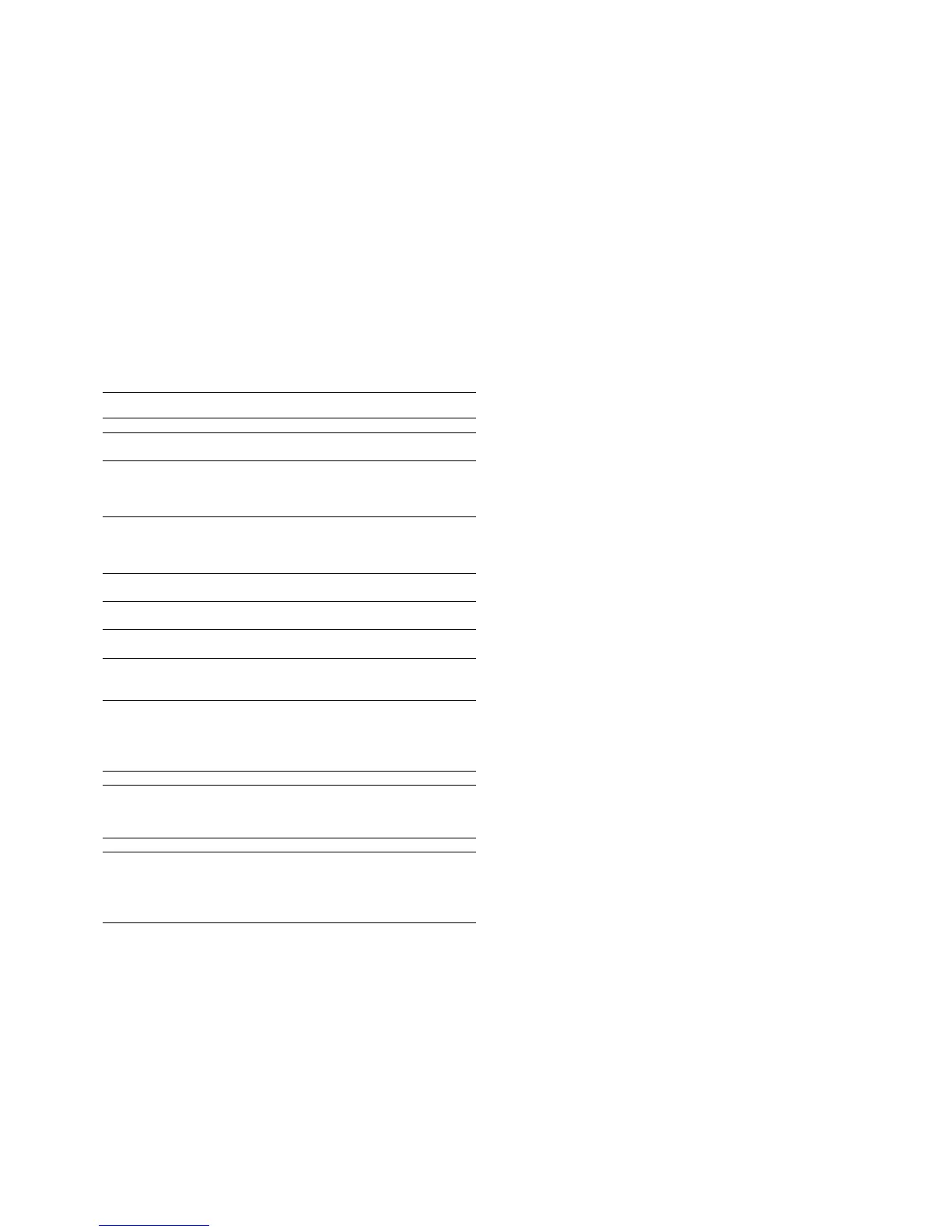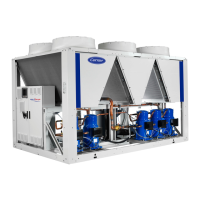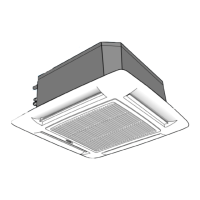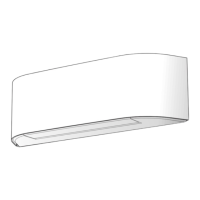51
19.9 - Electrical maintenance
When working on the unit comply with all safety precau-tions
described in section 1.3.
It is strongly recommended to change the unit fuses every
15000 operating hours or every three years.
It is recommended to verify that all electrical connections
are tight:
• After the unit has been received at the moment of
installation and before the rst start-up
• One month after the rst start-up,when the electrical
components have reached their nominal operating
temperatures
• Then regularly once a year.
19.10 - Tightening torques for the main electrical
connections
Component Designation in
the unit
Value (N·m)
Screw (PE) customer connection M8 PE 14.5
Screw on switch inlet zones
Switch-MG28904 QS_ 8
Tunnel terminal screw, compressor contactor
Contactor LC1D12B7 KM* 1.7
ContactorLC1D18B7 KM* 1.7
Contactor LC1D25B7 KM* 2.5
Tunnel terminal screw, compressor circuit breaker
Circuitbreaker25507 QM* 3.6
Circuitbreaker25508 QM* 3.6
Circuitbreaker25509 QM* 3.6
Tunnel terminal screw, control power transformer
Transformer - ABL6TS16B TC 0.6
Compressor earth terminal in the power wiring control box
M6 Gnd 5.5
Compressor earth connection
M8 Gnd 2.83
Tunnel terminal screw, pump disconnect switch
DisconnectswitchGV2ME08 QM_ 1.7
Disconnect switch GV2ME10 QM_ 1.7
Tunnel terminal screw, pump contactor
Contactor LC1K0610B7 KM 0.8to1.3
Contactor LC1K09004B7 KM 0.8to1.3
Contactor LC1K0910B7 KM 0.8to1.3
Contactor LC1K0901B7 KM 0.8to1.3
Variable-frequency switch ATV21 GS 1.3
19.11 - Tightening torques for the main bolts and screws
Screw type Used for Torque (N·m)
M8nut BPHE*xing 15
M10 nut Compressor mounting 30
Oil nut Oil equalisation line 100
Taptite screw M6 Panelxing 7
H M6 screw Stauff clamps 10
* BPHE = Brazed plate heat exchanger
19.12 - Compressors
The compressors do not require any specic maintenance.
Nevertheless the preventive system maintenance operations
prevent specic compressor problems. The following periodic
preventive maintenance checks are strongly recommended:
• Check the operating conditions (evaporating temperature,
condensing temperature, discharge temperature, heat
exchanger temperature difference, superheat, subcooling).
These operating parameters must always be within the
compressor operating range.
• Check that the safety devices are all operational and
correctly controlled.
• Check oil level and quality. If there is a colour change in
the sight glass, check the oil quality. This may include an
acidity test, moisture control, a spectrometric analysis etc.
• Check the leak tightness of the refrigerant circuit.
• Check the compressor motor power input, as well as the
voltage imbalance between phases.
• Check the tightening of all electrical connections.
• Ensure that the compressor is clean and runs correctly;
verify that there is no rust on the compressor shell and
no corrosion or oxydation at the electrical connections
and the piping.
ATTENTION: The compressor and piping surface tempe-
ratures can in certain cases exceed 100 °C and cause burns.
Particular caution is required during maintenance opera-tions.
At the same time, when the compressor is in operation, the
surface temperatures can also be very cold (down to -15 °C
for units with a low leaving water temperature), and can
cause frost burns.
19.13 - Evaporator and condenser maintenance
There is no particular maintenance necessary on the plate
heat exchanger. Check:
• That the insulating foam has not become detached or
damaged during work on the units
• That the entering and leaving water temperature sensors
are well connected
• The cleanliness on the water heat exchanger side (no
signs of leaks).
• That the periodic inspections required by local regu-
lations have been carried out.
19.14 - Corrosion check
All metallic parts of the unit (chassis, casing panels, control
boxes, heat exchangers etc.) are protected against corrosion
by a coating of powder or liquid paint. To prevent the risk of
blistering corrosion that can appear when moisture penetrates
under the protective coatings, it is necessary to carry out
periodic checks of the coating (paint) condition.

